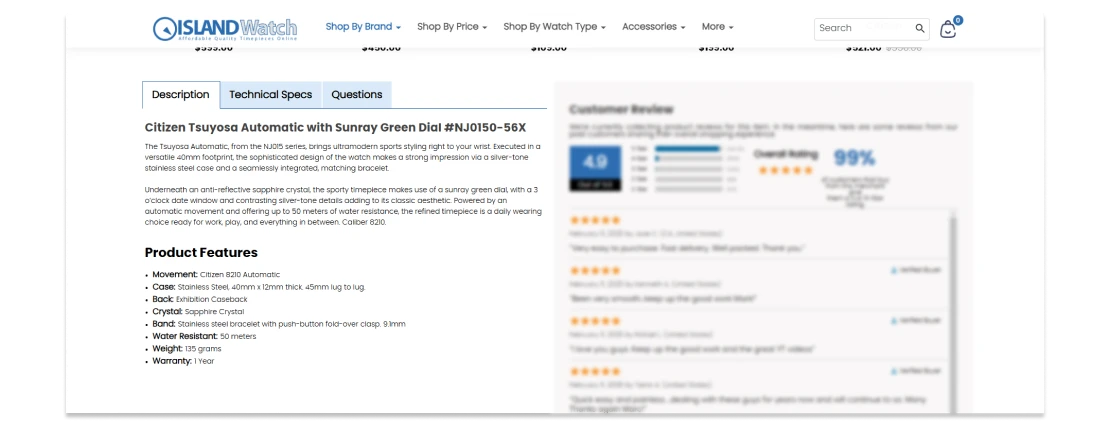
In today’s competitive digital landscape, marketing is evolving at lightning speed. What worked last year might not resonate today. Businesses that don’t regularly evaluate their marketing strategies risk wasting money, losing leads, and missing opportunities. That’s where a marketing audit comes in.
A marketing audit provides a 360-degree view of your marketing efforts. It helps identify which tactics drive results and which ones fall flat, allowing you to make data-driven decisions to improve performance. Whether you’re running an eCommerce business or managing a multi-channel brand, a marketing audit is critical for staying competitive and profitable.
In this guide, we’ll explore what makes a marketing audit effective, why it matters in 2025, and how you can implement one to elevate your business.
What Is a Marketing Audit?
A marketing audit is a detailed review of all your marketing channels, strategies, and performance. Unlike a casual assessment, this process digs deep into your marketing data to uncover inefficiencies and highlight areas for improvement. Think of it as a health checkup for your entire marketing ecosystem.
Unlike audits focused solely on technical SEO or website metrics, a marketing audit evaluates multiple areas, including email campaigns, paid ads, social media, and customer engagement. It gives you a complete view of how well your marketing aligns with your business goals.
Why Is a Marketing Audit Important?
The business landscape is constantly shifting. Trends emerge and fade, algorithms change, and customer expectations evolve. Without regular audits, you may inadvertently rely on outdated tactics that no longer produce results.
For example, a business might allocate a large portion of its budget to social media ads but fail to notice that organic engagement is dropping. An audit could reveal that their audience is now more active on another platform, prompting a pivot to more effective strategies.
A successful audit helps you:
- Align your marketing strategies with your objectives.
- Eliminate waste by cutting underperforming tactics.
- Identify opportunities for growth and optimization.
With e-commerce sales projected to continue rising in 2025, businesses that adapt through audits will be better positioned to capture market share and boost ROI.
Understanding the Differences: Marketing Audit vs. SEO and Website Audits
Many business owners may confuse a marketing audit with other audits, such as SEO and website audits. While all these audits aim to improve business performance, they target different areas of your operations.
- Marketing Audit: Focuses on your entire marketing strategy, including branding, content, advertising channels, target audience alignment, and messaging effectiveness. It assesses how well your marketing efforts are working toward your business goals.
- SEO Audit: Concentrates solely on optimizing your website for search engines. It looks at factors like on-page SEO, backlinks, technical errors, and keyword performance to improve organic visibility and search rankings.
- Website Audit: Reviews the functionality and performance of your website, including page speed, mobile responsiveness, and user experience. This audit identifies areas where technical or design improvements can enhance the customer journey.
A marketing audit takes a broader, strategic view, while SEO and website audits zoom in on specific technical and content-related areas. It’s important to understand these differences to avoid narrowing your focus during a marketing audit.
What Makes a Good Marketing Audit?
A strong audit is both comprehensive and actionable. It doesn’t just provide a list of problems; it offers solutions. Objectivity is crucial—you need to analyze your data without bias or assumptions.
To be effective, your audit should:
- Evaluate all relevant marketing channels (social media, email, website, paid ads, etc.).
- Rely on measurable data, such as click-through rates, cost-per-acquisition, and conversions.
- Provide clear recommendations based on findings.
Preparing for Your Marketing Audit
Before diving into the data, define your business goals. Are you trying to attract new customers, increase sales, or improve brand visibility? Your objectives will shape the areas you focus on during the audit.
Next, gather your performance data. Analytics platforms like Google Analytics, Shopify Reports, and HubSpot provide insights into how your campaigns and channels are performing. This step is crucial for getting a full picture of your marketing efforts.
Core Areas to Analyze
A thorough audit covers several key areas. Below are some examples to guide your assessment.
Website Performance
Your website is often your primary sales tool. If it’s slow, hard to navigate, or not optimized for mobile devices, users may leave before they even see your offerings. Examine loading times, user engagement, and bounce rates to identify any problem areas.
Content Relevance
Your content should be informative, engaging, and aligned with user intent. Outdated blog posts, vague product descriptionsp, or poorly optimized pages can drag down your search rankings and reduce conversions. Analyze traffic data to determine which pieces of content are performing well and which need improvement.
 Long Island Watches Product Description
Long Island Watches Product Description
Social Media Engagement
Social platforms can be a significant source of brand exposure and customer engagement. However, not all platforms will deliver equal results. Review each channel’s performance to understand where your audience is most engaged and refine your posting strategy accordingly.
How to Conduct the Audit Process
Step 1: Analyze Data Across Channels
Start by examining your key metrics, such as conversion rates, traffic sources, and engagement. Identify any inconsistencies or red flags. For example, if your social media campaigns drive traffic but fail to convert, you may need to rework your landing pages.
Step 2: Identify Strengths and Weaknesses
Compare your current marketing performance to industry benchmarks. Are your email open rates below average? Are competitors outperforming you in organic search rankings? This analysis will guide where to focus your optimization efforts.
Step 3: Develop Actionable Recommendations
Your audit should result in a detailed report outlining steps to improve your marketing efforts. Prioritize initiatives based on their potential impact. For instance, if your product pages aren’t optimized for search engines, addressing that may offer immediate gains.
Conclusion: The Path to Optimized Marketing
A marketing audit is more than a report card—it’s a roadmap for success. By regularly evaluating your strategies and performance, you’ll stay ahead of changing trends, deliver better customer experiences, and maximize your marketing ROI.
Whether you’re conducting your first audit or refining your approach, the key is to stay consistent and adaptable. Want expert support with your audit? Contact us at MAKDigital for tailored solutions designed to elevate your business.

 Eashan Mehta
Eashan Mehta






